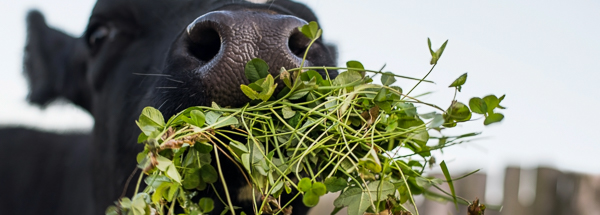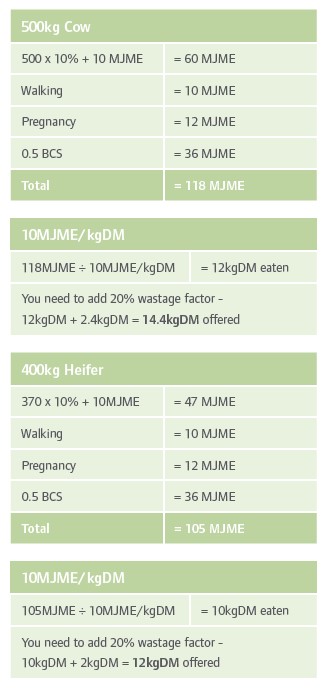
It is well-known and accepted that achieving the ideal BCS at dry-off is crucial to the proceeding season. The target is BCS 5.0 for cows and 5.5 for heifers. Unfortunately, for whatever reason, this is rarely achieved and we need to put weight on our cows through the dry period.
Cows calving 1 BCS lower than target will:
To achieve the ideal target, you need to supply a balanced diet that provides enough energy for a dry cow.
ME requirements for a dry cow and putting on 0.5 BCS:

For obvious reasons, you would not start the rugby season without pre-season training. The same goes for cows – transition management is pre-season prep for dairy cows. The transition period begins four weeks before calving and continues until four weeks post-calving. It is a period of incredible hormonal, metabolic and physiological change as a cow moves through the late stages of gestation, gives birth to her calf and moves into lactation. You need to cover all of the cow’s nutrient requirements to give the rumen, liver and mammary gland the capacity to deal with so much change. Then the herd will be well positioned to meet early peak milk solids output.
Minimising the incidence of metabolic and health disorders during this period will help the cow to achieve maximum production and help her to get in calf. It is important to transition and help the rumen microbes and papillae to adapt by feeding similar feed sources to the milking diet. Running the springer cows and heifers through the shed allows you to monitor the cows and, by simultaneously offering them a small quantity of feed (if fed in the shed) you will help them to develop the rumen papillae.
In the transition and early lactation period, the energy requirements are generally higher than intake. It is important to offer small amounts of quality feed due to the calf growing rapidly and the rumen shrinking.
This is shown very clearly with the farms that have collars on their cows because the ruminations drop dramatically and it can take many days post-calving for ruminations to get back to the ideal levels.
This is a clear indication that, with the correct feeding and transitioning, ideal ruminations can be achieved more quickly, resulting in fewer metabolic disorders, improved cow health, improved milk production and, ultimately, more profit.